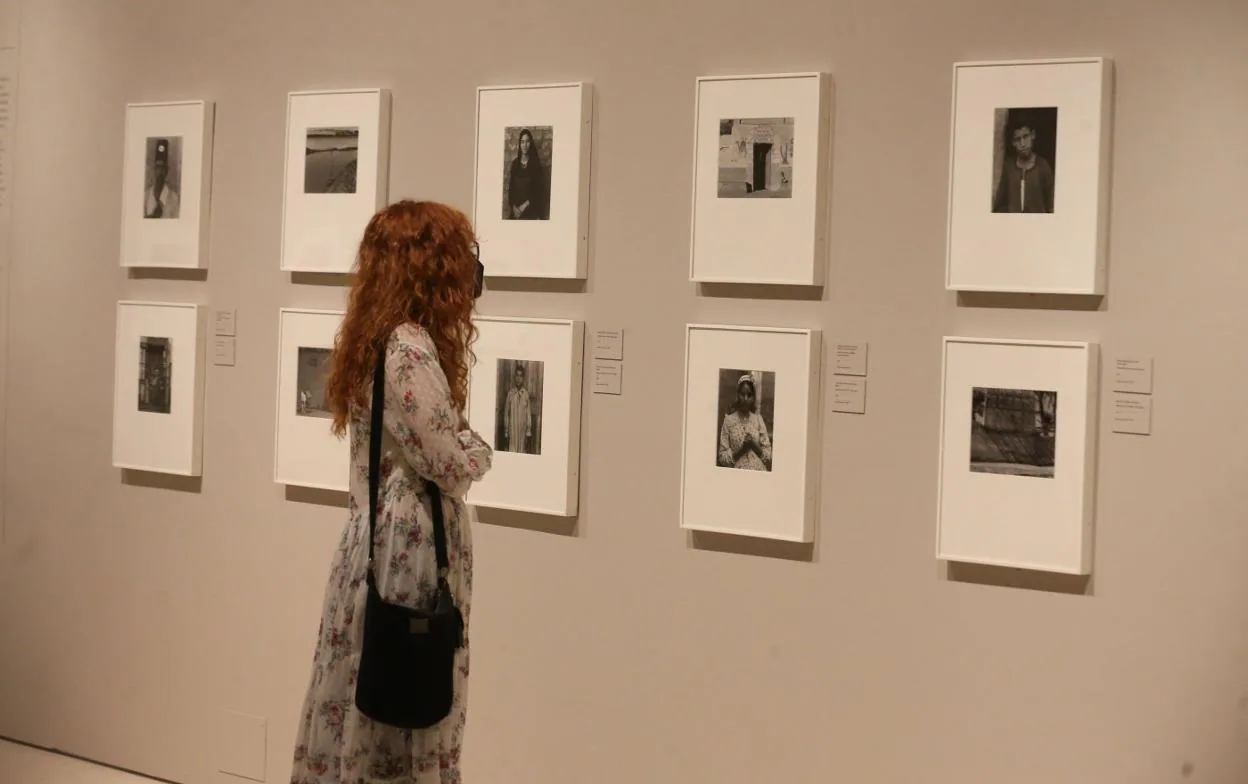Paul Strand: the first artist to photograph ordinary people
The Carmen Thyssen Museum is holding an exhibition of the works of this American who turned photography into an art form
REGINA SOTORRÍO
MALAGA.
Friday, 19 November 2021
His photograph of a blind woman in the streets of New York in 1916 had such an impact that Paul Strand abandoned portraits for 15 years. Never before had an outcast been featured in such a direct and stark manner. Strand photographed her without her knowledge, using a double camera system (a fake lens pointing forwards and the real one hidden on the side), so he could approach people without them realising. That snapshot by Paul Strand, one of the landmarks in the history of photography, is now on display with 130 others at the Carmen Thyssen Museum in Malaga.
The museum is inaugurating its first exhibition dedicated exclusively to photography with the Mapfre Foundation's entire collection of works by this artist, and it is the most extensive catalogue of images outside the USA. Paul Strand. La belleza directa, which can be seen until 6 March, is arranged in chronological order to build the story of how photography evolved during the 20th century.
-
Author Paul Strand (New York, 1890-Orgeval, France, 1976).
-
Works. Paul Strand. La belleza directa consists of 131 photographs from the Mapfre Foundation collection.
-
Where Carmen Thyssen Museum, Malaga (C/ Compañía, 10-Plaza Carmen Thyssen).
-
When Until 6 March.
"He is a key figure in the manifestion of photography as an independent form of art," says curator Carlos Gullonet, while for the director of the museum, Lourdes Moreno, Strand was "one of those responsible for the emancipation of photography as a means of autonomous artistic expression," detached from painting. All the images on display at the Thyssen were developed by Strand himself, worked as "handcrafted objects".
This American photographer, the son of Czech immigrants, broke with the pictorialism predominant during that era (the photograph that copies painting) and revolutionised the concept of photography by putting the focus on ordinary people to portray a society. In his early stage, Strand was influenced by the avant-garde of the time and focused on objects and archaeological features which made geometric images similar to cubism. It was from this period that we see the innovative photo from the inner courtyard of a New York building and the abstraction he achieves with a set of mugs.
It was the early 1920s when Strand captured an ad man, a blind woman and other individuals from the Lower East Side of New York who had never had a camera lens focused on them before. It was a type of social photograph which may seem conventional nowadays, but at that time it was something absolutely new. The repercussion was so great that Strand moved away from portraits and focused on the world of cinema, where he made one of the pioneering films in the cinematic language of the avant-garde, Manhatta, inspired by poems by Walt Whitman.
His camera started shooting again in the 1930s in Mexico, where his political activism had led him. For the first time, popular culture crept into his portraits, seeking a connection between the people and their land. They included not only the inhabitants of the villages, but also their religious images, such as Calvary and Christ with Thorns. These works are collected in a portfolio, books that he would work on throughout his career with the idea of making photography more accessible.
In 1945, the MoMA in New York organised a retrospective of his work, the largest exhibition ever devoted to a photographer. It was a complete success and led to his next project: Time in New England. Here, portrait photography takes on another dimension. The photos were not 'stolen' as they had been in previous years; instead Strand engages in a relationship with the sitter and spends hours setting up the scene.
"It was exhausting at times," says Gullonet. "The photos of Helen Bennet, war bride, are fantastic. New England was almost a rehearsal for what his career would focus on after that: his obsession for showing a society through the elements that make it up. Through a small community, he represents the idea of a whole country," he says.
He achieved this definitively with his project in Italy, with a direct and uncontrived look at its people, such as a young apprentice tailor, the post office employee and her daughter, and the large Lusetti family.
Challenging the spectator
His portraits are the images that speak most clearly to the spectator, but there are also landscapes and details of villages. Whereas before he wanted to capture the past of the communities, in Italy he shows its present and in the following destinations he seeks the future. Driven by his socialist ideas, Strand travelled to Romania, Egypt and Ghana to reflect the future of people with new progressive governments. This intention is very evident in the snapshots of factory workers in Romania, for example.
After the 1950s, his home was in France. He voluntarily left the USA due to the pressure of anti-communist McCarthyism suffered by many of his colleagues. The photo of the boy looking straight at the spectator on the poster for this exhibition was taken in Charente, France. Strand bought his first house to the west of Paris with his first proper photography studio. And that is where this exhibition comes to an end, with a series of photos of his garden there, the operational base of a nomadic life, portraying the people.
u
u
u
u


Comentar es una ventaja exclusiva para registrados
¿Ya eres registrado?
Inicia sesiónNecesitas ser suscriptor para poder votar.